Zhangzhou Wares from the Nan Ao Number 1 (南澳一号) Shipwreck
The Nan Ao Number 1 shipwreck, discovered off the coast of Shantou, Guangdong Province, was salvaged in 2010 by the Guangdong Provincial Institute of Cultural Relics and Archaeology. Its cargo primarily consisted of Zhangzhou blue-and-white ceramics, with a smaller number of Jingdezhen blue-and-white wares.

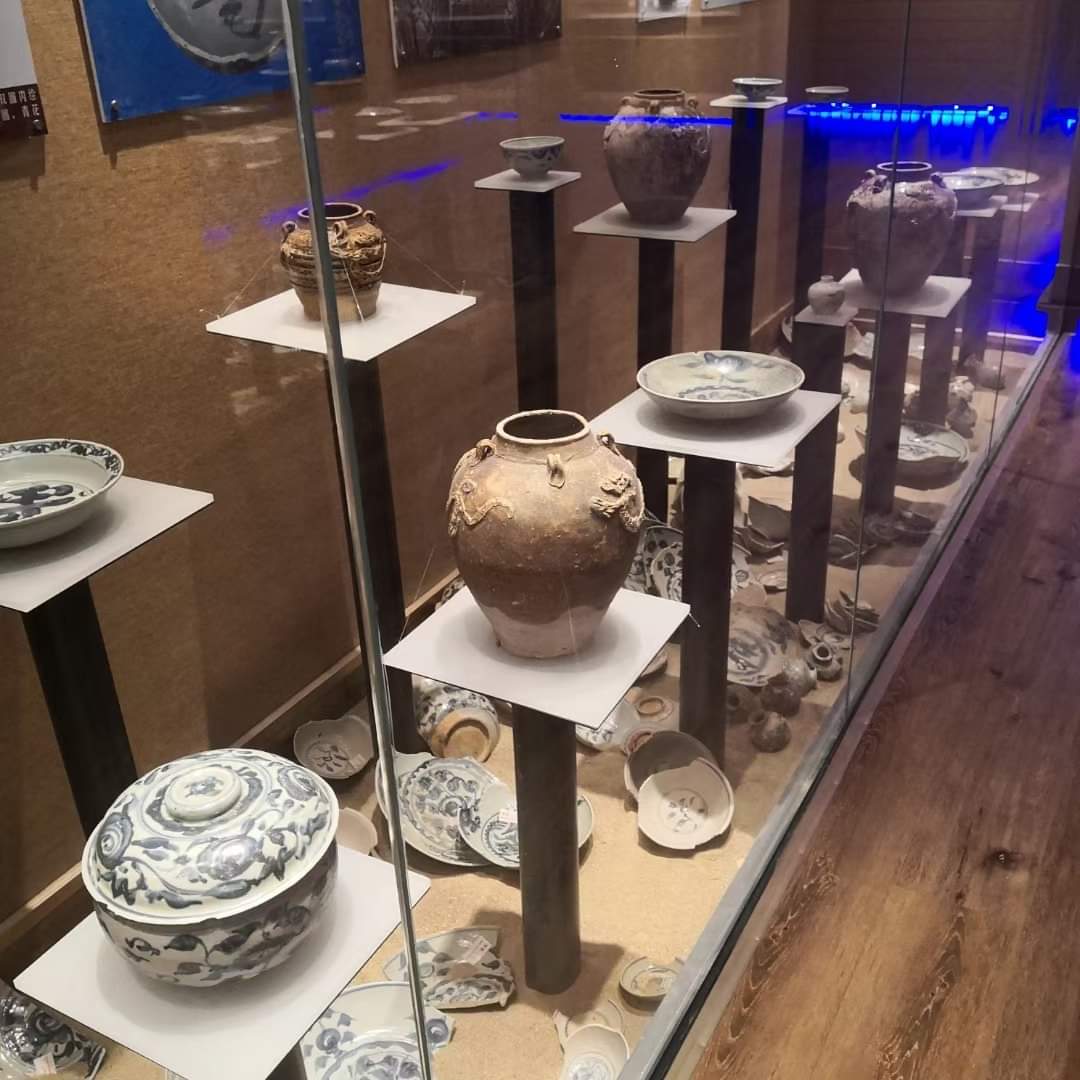 |
|
 |
 |
|
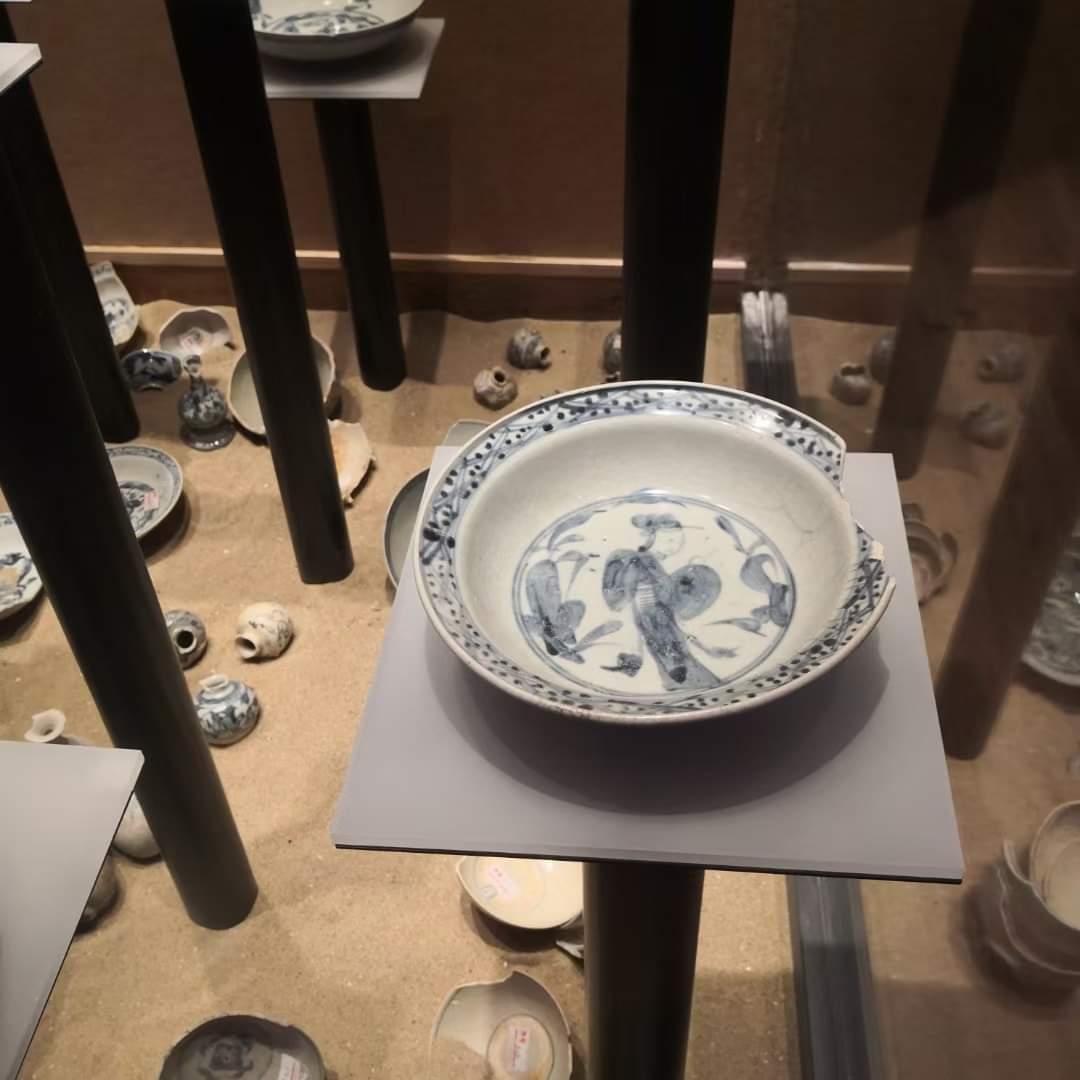 |
|
 |
|
|
|
|
|
|
|
|
|
 |
|
 |
|
 |
|
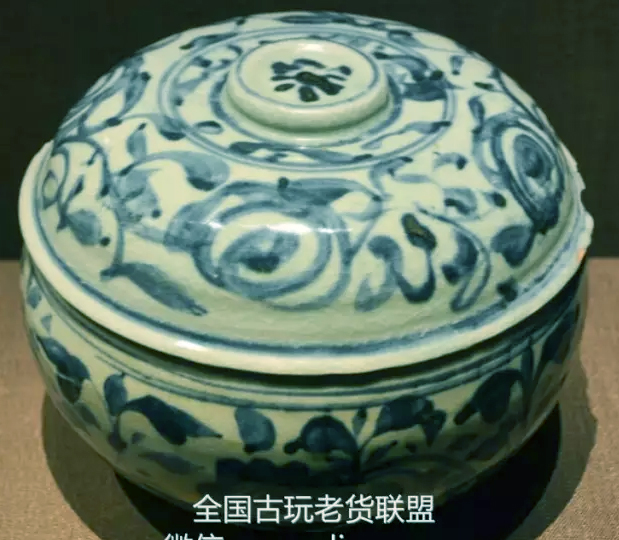
|
|
|
|
|
|
Artefacts from the Nanao 1 Wreck |
|
Dating the Nan Ao Wreck
In 2019, thermoluminescence (TL) testing conducted by the Shanghai Museum on two Jingdezhen ceramic samples from the wreck produced dates of 490±40 years and 498±50 years, corresponding to a production range of 1569–1571 (Longqing 2nd–5th year, 1567–1572).
 |
| Thermoluminescence (TL) testing conducted by the Shanghai Museum on two Jingdezhen ceramic samples from the wreck produced dates orresponding to a production range of 1569–1571 (Longqing 2nd–5th year, 1567–1572). |
Stylistic comparisons between Jingdezhen blue-and-white bowls and dishes from Nan Ao 1 and those from the Jingdezhen Guan Yinge excavation reveal strong parallels with early-to-mid Wanli period (1573–1620) designs.
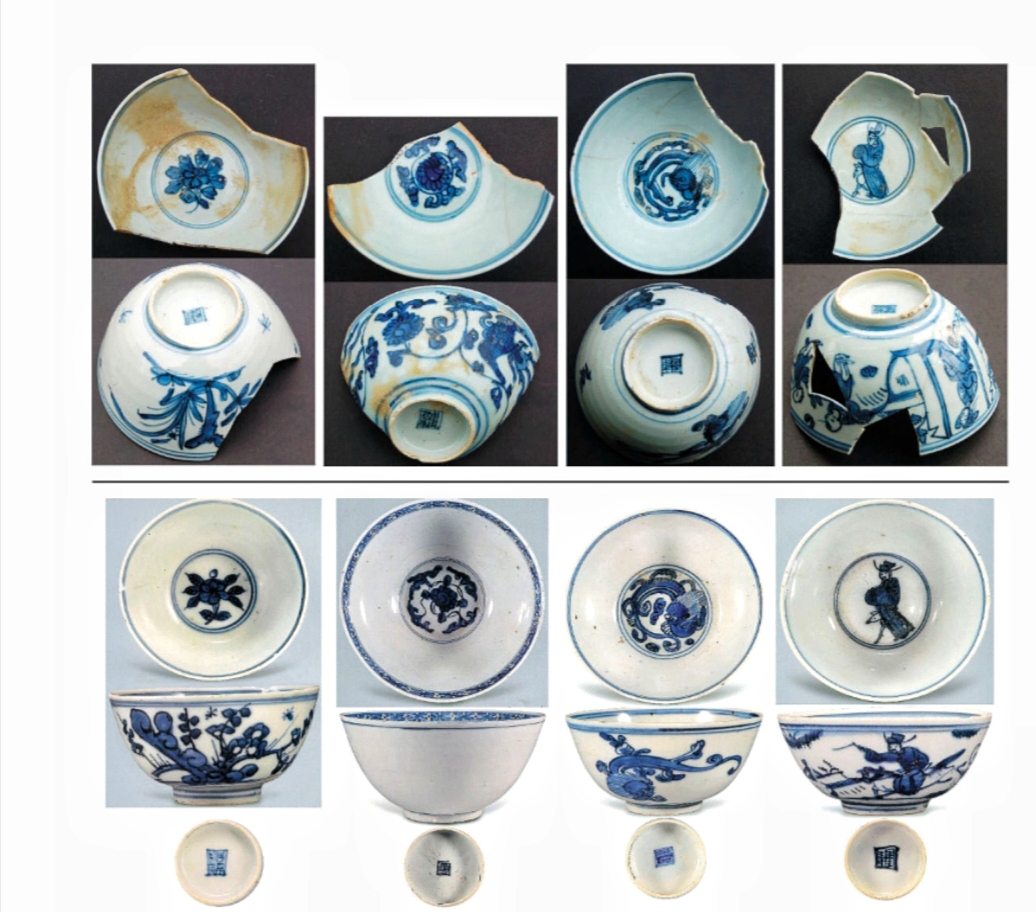 |
| Top: Samples from Jingdezhen Guan Yinge. Bottom: Examples from Nanao 1 Wreck. |
 |
| Left: Guan Yinge Right: Nanao 1 Wreck |
Swatow Ware and Its Emergence
Shangchuan Island (上川岛), a Portuguese trading hub west of Macau before 1557, yielded Zhengde/Jiajing-period (1506–1567) ceramic sherds, but none in kraak or Swatow styles. This suggests that Swatow blue-and-white wares were either not yet in production or still in an experimental phase during that time.
The combined TL results and archaeological evidence indicate that the Nan Ao 1 wreck most likely dates to the Longqing to early Wanli period (late 1560s–early 1570s).
Insights from the Nan Ao 1 Wreck
Several shipwrecks, including San Isidro, Nan Ao 1, and Blanakan, are linked to the early export of Zhangzhou ceramics.
Connections to the Ko Kradat Wreck
Zhangzhou fragments from the Ko Kradat wreck (southeastern Thailand, salvaged 1978–1980) include a shard bearing a Jiajing-period (1522–1567) mark, suggesting a Jiajing dating.
A Ko Kradat bowl fragment featuring a grapevine interior and pine tree exterior—initially misidentified as Sawankhalok ware—shares similarities with examples from Blanakan (Indonesia) and Nan Ao 1. However, Nan Ao 1 pieces exhibit looser and less refined brushwork compared to Ko Kradat and Blanakan.
 |
| Fragment with the Made in Ming Jiajing Mark |
 |
| Some Ming blue and white fragments from Ko Kradat wreck |
 |
| Two Zhangzhou fragments from Ko Kradat (Bottom Left). Stylistically similar to that of a bowl from the Blanakan wreck (Bottom right). The Jingdezhen bowls with grapes/vines design are also stylistically similar. |
 |
| Jingdezhen bowls of grapes/vine design from Nanao 1 wreck is more sketchy as compared to those form Blanakan and Ko Kradat Wrecks. |
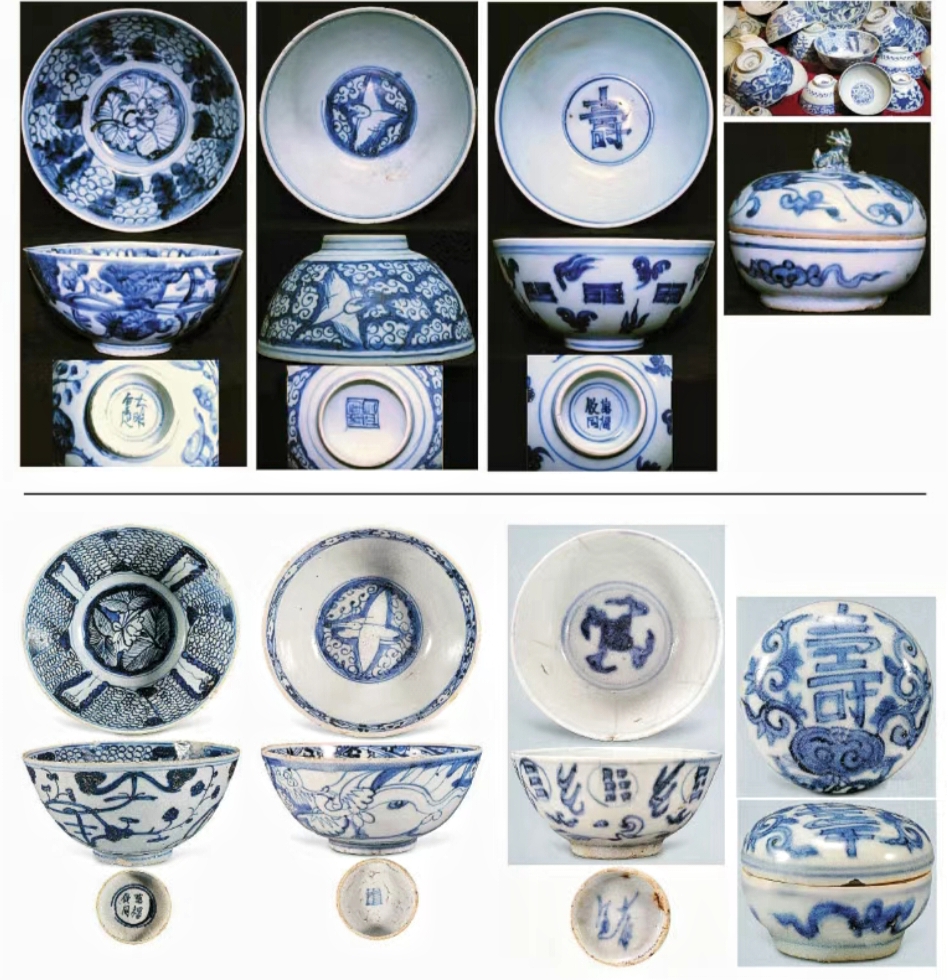 |
| Top: Blanakan Wreck Bottom: Nanao 1 Wreck. Those from Blanankan wreck have generally better drawn decoration. |
Stylistic Evolution of Zhangzhou Wares
A comparative analysis of ceramics from Ko Kradat, Blanakan, San Isidro, and Nan Ao 1 reveals the following trends:
- Nan Ao 1 motifs are more free-flowing but less controlled than those of the other wrecks.
- San Isidro wares closely resemble Jingdezhen Hongzhi/Zhengde-period (1488–1521) designs, whereas Nan Ao 1 ceramics show distinct compositional evolution.
.jpg) |
 |
| The calligraphic style of the motifs from Jingdezhen and San Isidro Wreck shared much similarity. |
This stylistic progression suggests that San Isidro and Blanakan predate Nan Ao 1, likely dating to the late Jiajing period (1560s).
Further Insights into Swatow Wares
Sumarah Adhyatman’s classification in Zhangzhou (Swatow Ceramics) distinguishes two main types:
- "Conservative type": Calligraphic-stroke blue-and-white wares.
- "Persistent type": Kraak-style wares.
The Nan Ao 1 cargo indicates that by the early Wanli period, Zhangzhou potters had already diversified their designs, with the "conservative style" becoming a dominant export from Fujian. By 1600, as evidenced by the San Diego wreck, kraak-style wares had largely supplanted this earlier tradition.
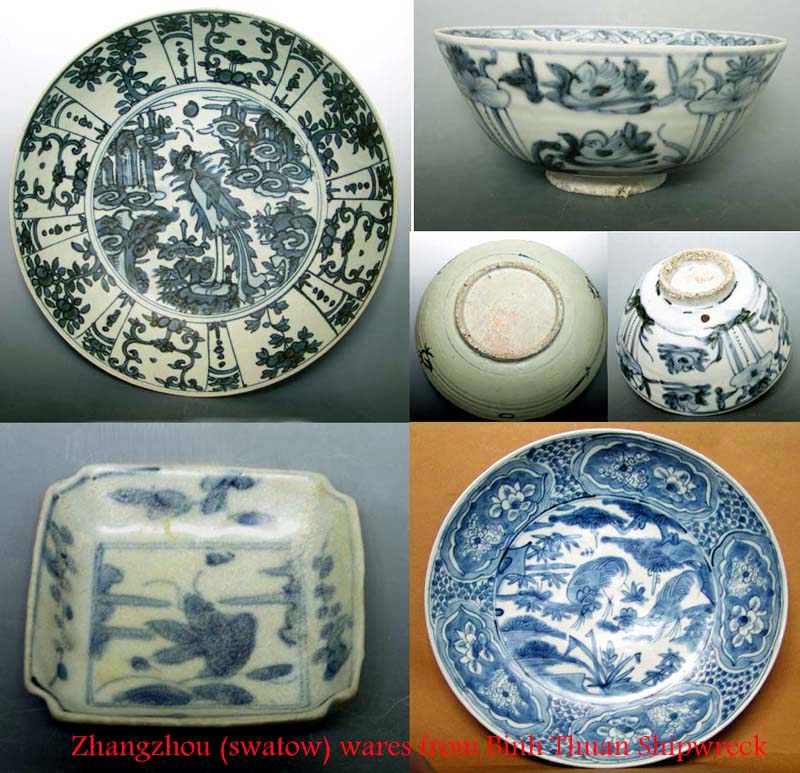 |
| Two of the above plates from the Binh Thuan wreck (1620s) are decorated with kraak-style panelled decoration. |
Notably, while Nan Ao 1 carried Jingdezhen overglaze-enameled vessels, no Swatow examples were found, suggesting that the adoption of enameling techniques in Fujian occurred later.
|
|
 |
| A box and a bowl with overglaze enamelled decoration from the Nanao 1 Wreck. |
Concluding Remarks
Swatow ware production coincided with the rise of Yuegang as a major Ming-era export hub. Despite private trade bans, Jingdezhen ceramics were widely exported by the Hongzhi period (1488–1505), as seen in the Lena and Brunei wrecks.
Following the 1567 (Longqing reign) lifting of trade restrictions, Yuegang flourished. The Nan Ao 1 voyage—post-ban—demonstrates Zhangzhou kilns’ rapid response to global demand, offering crucial insights into the development of Swatow ware during this transitional phase.
Written by: NK Koh (20 Oct 2014)
Updated: 28 Mar 2017 | 3
Jun 2022, updated: 25 Feb 2025